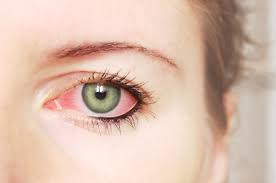
Who gets dry eyes?
People who wear disposable contacts and reach middle age often find that their favorite brand or type of contacts no longer feel comfortable.
Not because they have outgrown contacts now that they have reached their 40’s, but because of one of the most common complaints ophthalmologists hear from patients—dry eyes. Contact lenses can aggravate dry eyes and leave patients with irritated, red eyes. With such a common complaint, many people wonder if there is a cure for dry eyes.
Sources of Moisture in the Eyes
There are only a few sources of moisture in the eyes. The lacrimal gland is located in the upper outer quadrant of the eye. This gland produces the river of tears when someone cries or gets something in their eye.
Another source of moisture in the eyes include a network of glands embedded in the white surface of the eye and under the surface of the eyelids, called the conjunctiva. These important glands produce water and mucus which keep the eye from drying out.
Finally, the glands at the edge of the lids produce an oily substance that keep the eye lubricated. When mixed with the water and mucus from the conjunctiva, this tear film on the surface of the eye allows for proper vision. Every time a person blinks, this mixture is reapplied to the surface of the eye. Keeping the eye moist and protected.
Lack of Tears
The tear production in the eyes tends to slow as a person ages. For women, menopause is one of the major reasons for dry eyes. If the tear producing lacrimal glands don’t make tears as they once did, there will be a problem with the amount of tears. When either of the other two glands slow, the result is dry eye syndrome. A lack of tear film on the eye can leave a person with a feeling of burning or grittiness in their eyes.
Other Causes of Dry Eye Syndrome
In addition to aging, there are many other causes of dry eye syndrome. These include:
- Side effect from antihistamines, blood pressure medicines, or other medications
- Thyroid problems, rheumatoid arthritis, Parkinson’s disease, Sjögren’s syndrome, diabetes, or other underlying conditions
- Exposure to irritating environmental pollutants such as dust, smoke, or pet dander
- Eye surgery
- Contact lens use
- Staring at a computer screen, phone, or television for too long without blinking and replenishing the tear film
Computer Vision Syndrome
A dry eye syndrome culprit not seen much until the 21st century is known as computer vision syndrome. This is caused from staring at the computer screen for long periods of time and blinking less. Since the eyes are open more of the time, they tend to dry out since the lack of blinking does not refresh the surface of the eye with lubricating tears. Symptoms of this new cause include blurry or double vision.
How to Treat Dry Eyes
Soothing dry eyes is not only for comfortable vision, but it can also help to avoid infections and scarred corneas. The treatment options for dry eye syndrome include:
- Warm compresses
- Gentle eye massage that help to stimulate the oil glands on the lids
- Artificial tears which bring temporary relief
- Certain medicines
- Placement of tear drainage ducts into the tear duct to block excessive tear drainage
- TheraLife products for dry eye syndrome – to restore tear functions inside out.
Some sufferers do not want to undergo an uncomfortable office visit, put up with endless applications of artificial tears which can actually dry the eyes out even more, or take medicines to relieve their dry eyes. They opt for a more natural solution, TheraLife.
TheraLife – A Leader in Chronic Dry Eye Relief
TheraLife goes directly to the source of the problem of dry eyes-lack of tear production. With their entire line of natural dry eye relief products, TheraLife addresses the fundamental cause of dry eyes: underactive tear secretion. By targeting the issue of decreased tear production from the inside out with natural methods,
TheraLife promotes the production of the body’s own healing tears without the use of artificial tears, medications, or surgical procedures.
With an all-natural, unique proprietary formula, TheraLife is clinically proven to provide relief for 80% of first-time users. By increasing intracellular metabolism, membrane permeability, and micro-circulation of the blood, the meibomian, lacrimal, and goblet cells that makeup the tear glands area able to secrete their own tears naturally helping to overcome dry eye syndrome issues.
Painful inflammation and dryness is eliminated when the body is able to naturally produce tears. Restoration of comfortable vision is possible with TheraLife’s line of all natural products that address the root cause of dry eye. End reliance on drops or medicine and restore comfortable vision for the eyes with TheraLife.
To learn more,
Call and talk to a doctor toll free 1-877-917-1989 US/Canada. International (650) 949-6080. Email to: [email protected]





I’ll only say that one should consult with a specialist for eye dryness treatment.
I do sit at computer all day thru the week. But I know some of my dry eye may be hereditary. My condition was considered chronic. I could barely withstand sun and wind. I went thru the Restatsis for several years, then changed to Xiidra. Neither one was the answer. Ended up getting plugs put in my tear ducts.. If I couls measure the success in a 1-10, 10 be perfect, 1 being miserable, I was originally a 3. After the plugs, I am now about an 8.
Very happy with the result. I seem to think you just have to try everything till something helps you.
Ron
Thanks for sharing your success story